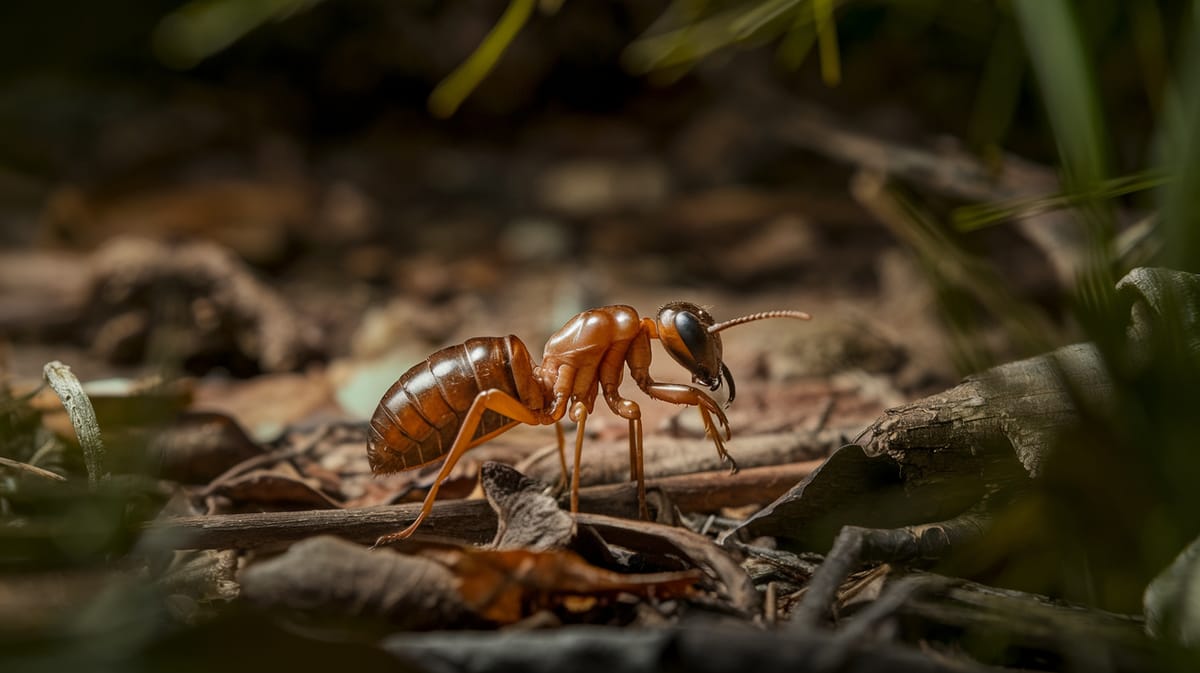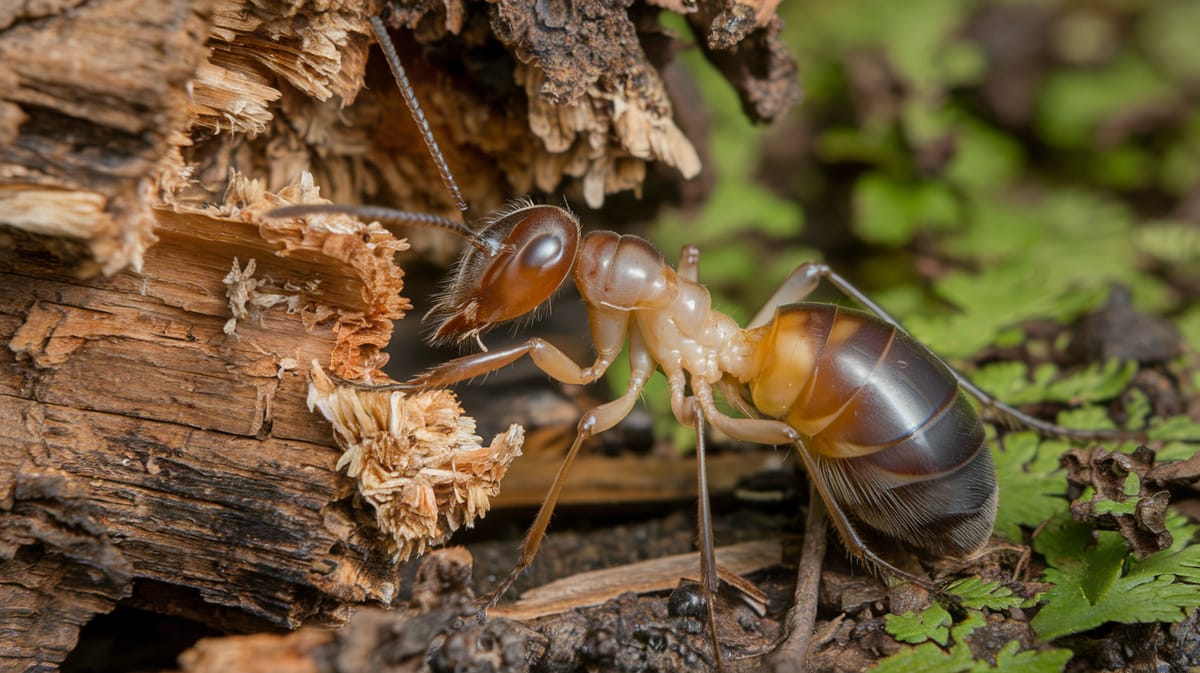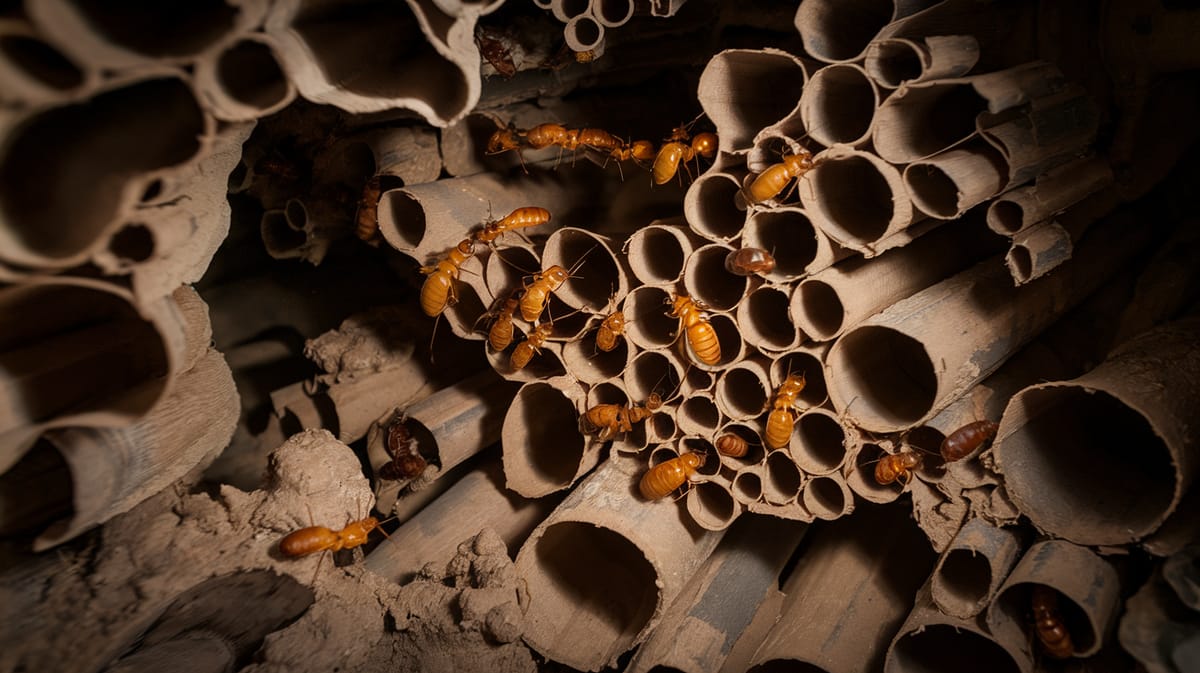Subterranean Termite
Masters of underground engineering, Subterranean Termites build vast tunnel networks and play crucial roles in decomposing organic matter, enhancing soil fertility.

Key Insights at a Glance
Did You Know?
Taxonomy & Classification
Subterranean termites exhibit unique social structures and advanced wood-digesting capabilities, reflecting their sophisticated evolutionary adaptations for life underground. Let's understand the evolutionary journey and classification of these remarkable decomposers.
Species Diversity
Over 50 species of Reticulitermes are found globally, with a significant presence in North America and Asia, highlighting their ecological adaptability.
Ancient Origins
Subterranean termites evolved around 150 million years ago, surviving major climatic shifts due to their efficient social organization and resource utilization.
Lifecycle and Growth
A remarkable journey of transformation from Egg to Adult.
Egg
Eggs are laid in hidden nests where they develop under optimal conditions, protected by workers and the environment.
Nymph
Nymphs undergo multiple molts, progressively developing into their roles as workers, soldiers, or reproductive adults.
Adult
Adults include vital roles like queens, kings, and workers, ensuring colony expansion and maintenance through reproduction and resource management.
Dietary Habits
A voracious wood consumer, this insect efficiently digests cellulose using symbiotic gut microbes, enabling it to feed primarily on wood.
| DIET TYPE | DESCRIPTION |
|---|---|
| Primary Diet | Feeds mainly on wood, especially moist or decaying structures, using specialized enzymes to break down cellulose. |
| Secondary Diet | Consumes plant material and dead leaves, supplementing its diet when wood sources are scarce. |
| Occasional | Occasionally ingests fungi and soil, leveraging available nutrients during adverse conditions or food scarcity. |

Behaviour and Adaptations
Discover the fascinating adaptations that enable Subterranean Termites to thrive underground.
Efficient Soil Navigation
Subterranean Termites expertly tunnel through soil, creating complex networks for colony expansion.
Moisture Control
They maintain moisture levels in their habitat, crucial for survival in dry environments.
Social Cohesion
Strong caste system ensures efficient colony functioning and resource sharing.
Ecosystem Impact
Subterranean Termites play a crucial role in ecosystem health and sustainability.
Soil Aeration
Enhance soil quality by tunneling, which improves water infiltration and root growth.
Nutrient Recycling
Break down organic matter, returning essential nutrients to the soil.
Habitat Creation
Create habitats for other organisms in their underground tunnels.
Conservation Challenges
Understanding and addressing the major threats to Subterranean Termite populations.
Chemical Exposure
Pesticides and chemicals disrupt termite colonies, affecting their role in ecosystems.
Habitat Loss
Deforestation and urbanization lead to loss of natural habitats for termites.
Climate Change
Changing weather patterns alter termite habitats and food sources.
Frequently Asked Questions
How long do Subterranean Termite live?
Subterranean termites typically live for 1-2 years. However, the queen can live for over a decade, continuously producing offspring. Worker and soldier termites have shorter lifespans, while reproductive termites like alates can survive longer under favorable conditions.
What do Subterranean Termite eat?
Subterranean termites primarily feed on cellulose, which is found in wood, paper, and other plant-based materials. They consume these materials to extract the nutrients needed for survival. This feeding habit can lead to significant damage to wooden structures.
Are Subterranean Termite poisonous?
Subterranean termites are not poisonous to humans. They do not carry diseases or toxins. Their main concern is structural damage to buildings. They silently feed on wood and can cause significant harm over time if not properly managed.
Are Subterranean Termite endangered?
Subterranean termites are not considered endangered. They are widespread and thrive in many regions, especially in warm, moist environments. Their adaptability to various habitats and reproductive efficiency help maintain their populations.
What do Subterranean Termite symbolize?
Subterranean termites often symbolize destruction and persistence due to their ability to cause structural damage if left unchecked. In some cultures, they might also represent industriousness and teamwork because of their complex social structures and cooperative behaviors.
Do Subterranean Termite bite?
Subterranean termites rarely bite humans. Their mandibles are primarily used for chewing wood and other materials, not for biting people. Soldier termites may bite in defense, but such instances are uncommon and usually not harmful to humans.
What color are Subterranean Termite?
Subterranean termites are typically creamy white to dark brown. Workers are usually pale, almost translucent, while soldiers have darker heads. Reproductive termites, or alates, are darker with wings, which help them during their swarming phase.
Does a Subterranean Termite have wings?
Yes, reproductive subterranean termites, known as alates, have wings. These wings are used for swarming and mating flights. After mating, they shed their wings and establish new colonies. Workers and soldiers do not have wings.
What does a Subterranean Termite look like?
Subterranean termites have soft bodies and are typically small, measuring about 1/8 to 3/8 inch long. Workers are pale, soldiers have larger heads with mandibles, and alates are darker with two pairs of wings. Their antennae are straight and bead-like.
Is a Subterranean Termite an insect?
Yes, a subterranean termite is an insect. It belongs to the order Blattodea, which also includes cockroaches. Like other insects, termites have a segmented body with a head, thorax, and abdomen, along with six legs and antennae.
Related Insects
Discover insects with similar characteristics to Subterranean Termite - including shared habitats, diets, and taxonomic classifications
Share this profile
Help others discover Subterranean Termite
